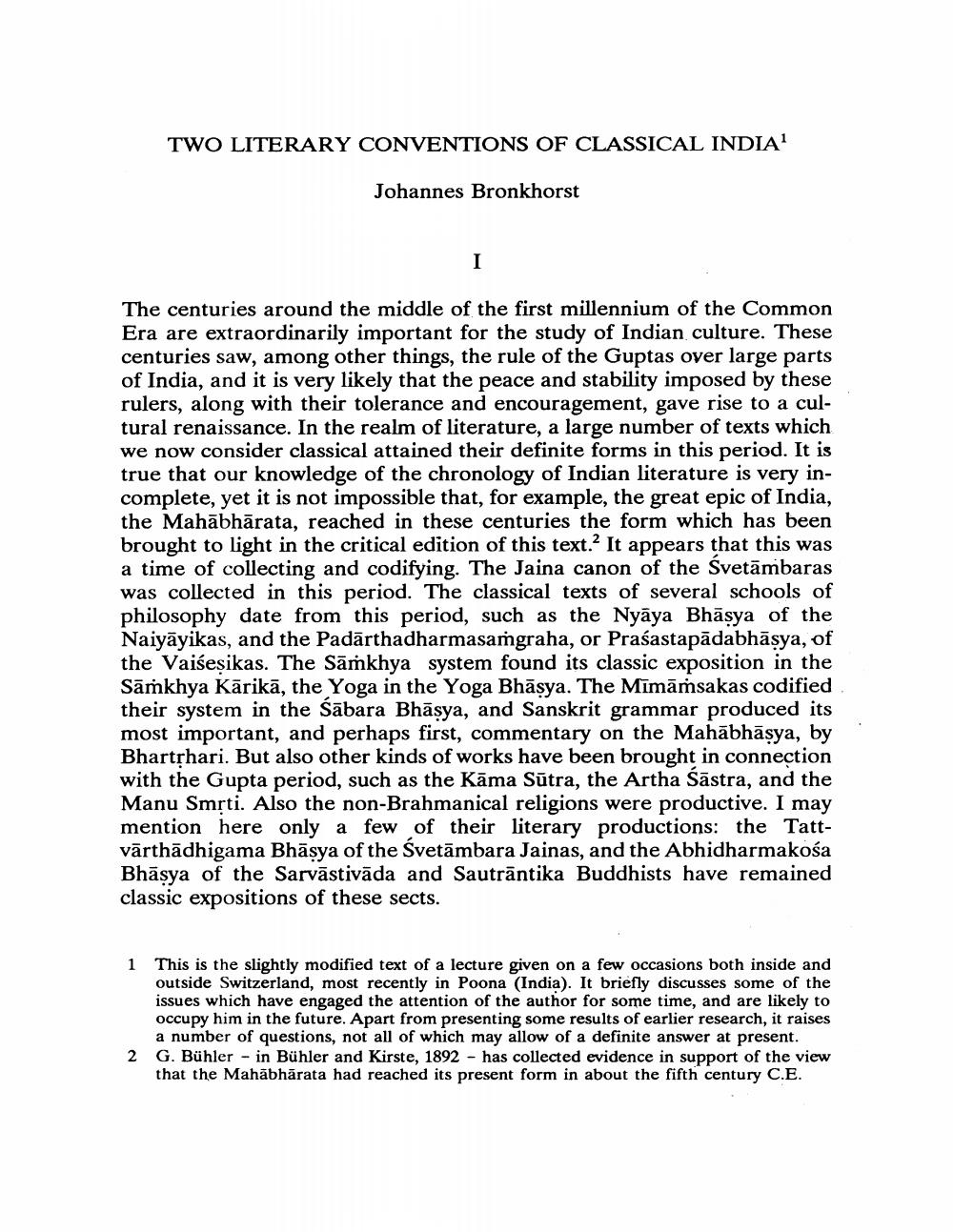Book Title: Two Literary Conventions Of Classical India Author(s): Johannes Bronkhorst Publisher: Johannes Bronkhorst View full book textPage 1
________________ TWO LITERARY CONVENTIONS OF CLASSICAL INDIA Johannes Bronkhorst The centuries around the middle of the first millennium of the Common Era are extraordinarily important for the study of Indian culture. These centuries saw, among other things, the rule of the Guptas over large parts of India, and it is very likely that the peace and stability imposed by these rulers, along with their tolerance and encouragement, gave rise to a cultural renaissance. In the realm of literature, a large number of texts which we now consider classical attained their definite forms in this period. It is true that our knowledge of the chronology of Indian literature is very incomplete, yet it is not impossible that, for example, the great epic of India, the Mahābhārata, reached in these centuries the form which has been brought to light in the critical edition of this text. It appears that this was a time of collecting and codifying. The Jaina canon of the Svetāmbaras was collected in this period. The classical texts of several schools of philosophy date from this period, such as the Nyāya Bhāsya of the Naiyāyikas, and the Padārthadharmasamgraha, or Prasastapādabhāsya, of the Vaišesikas. The Sāṁkhya system found its classic exposition in the Samkhya Kārikā, the Yoga in the Yoga Bhāsya. The Mīmāmsakas codified their system in the Sābara Bhāsya, and Sanskrit grammar produced its most important, and perhaps first, commentary on the Mahābhāsya, by Bhartshari. But also other kinds of works have been brought in connection with the Gupta period, such as the Kāma Sūtra, the Artha Sāstra, and the Manu Smrti. Also the non-Brahmanical religions were productive. I may mention here only a few of their literary productions: the Tattvārthādhigama Bhāsya of the Svetāmbara Jainas, and the Abhidharmakosa Bhāsya of the Sarvāstivāda and Sautrāntika Buddhists have remained classic expositions of these sects. 1 This is the slightly modified text of a lecture given on a few occasions both inside and outside Switzerland, most recently in Poona (India). It briefly discusses some of the issues which have engaged the attention of the author for some time, and are likely to occupy him in the future. Apart from presenting some results of earlier research, it raises a number of questions, not all of which may allow of a definite answer at present. G. Bühler - in Bühler and Kirste, 1892 - has collected evidence in support of the view that the Mahābhārata had reached its present form in about the fifth century C.E. 2Page Navigation
1 2 3 4 5 6 7 8 9 10 11 12 ... 18
